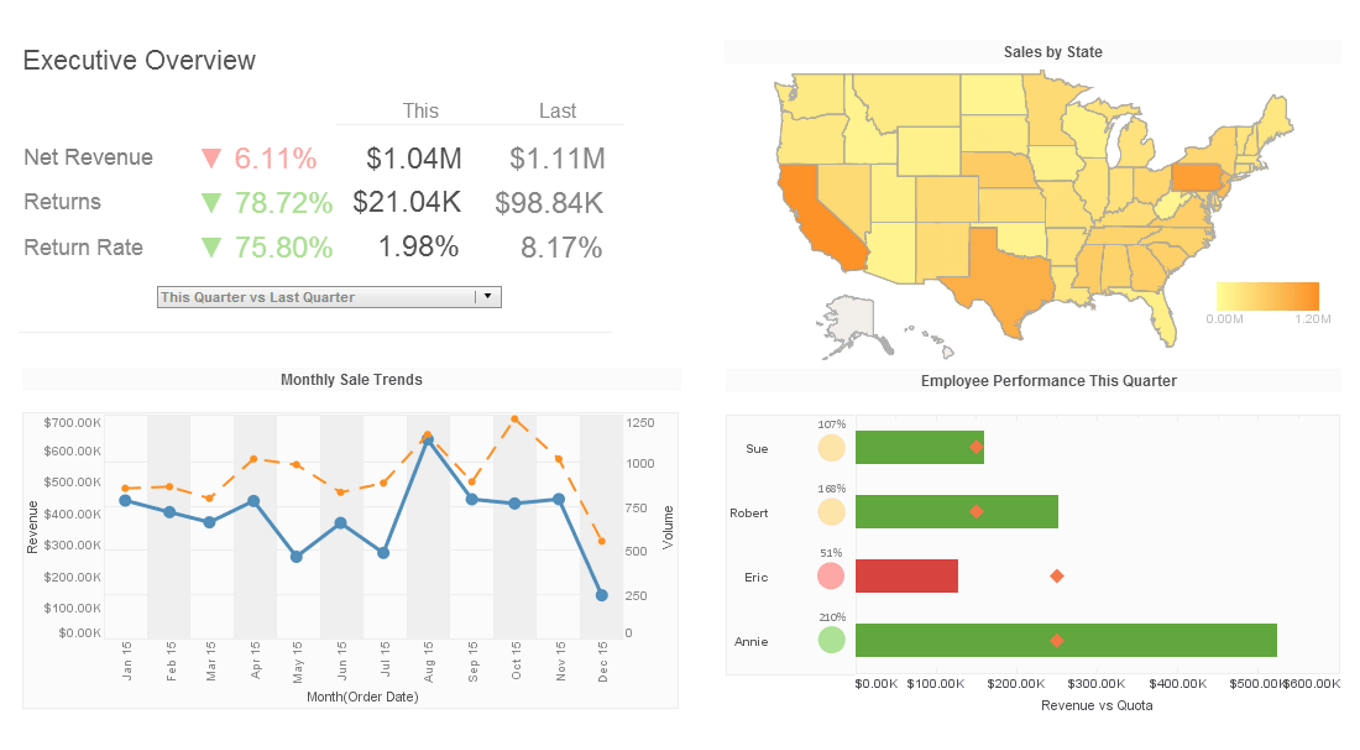InetSoft Webinar: Best Practice Report About Self Service Business Intelligence
This is the continuation of the transcript of a Webinar hosted by InetSoft on the topic of "Why You Need Data Discovery Software." The speaker is Abhishek Gupta, product manager at InetSoft.
I came across a best practice report about self service business intelligence. It said that for the main reasons for implementing self-service BI, 65% said constantly changing business needs, so you can see the need for flexibility there. 57% said the inability of IT to meet user demands. We’ve been talking about that. And again you can see right here on the screen some of the key reasons for self-service BI to be important to organizations.
But then we want to look at what are some of the inhibitors. Again I am quoting from the report. Almost 60% said business user skills were an obstacle. So again the difficulty of deploying many BI tools pervasively comes up. It has been used by power users and business and data analysts, but getting it out to non-technical users is a challenge.
I think we’re still in an evolution towards where we’re getting tools that business users who are not that technical in that respect are able to use. 55% say lack of data quality control and governance is a problem. Well these are universal difficulties with BI and data warehousing.
| #1 Ranking: Read how InetSoft was rated #1 for user adoption in G2's user survey-based index | Read More |
Whole communities have been working on this in terms of data quality so they certainly not going to avoid those with data discovery or UIA tools. Lack of training for business users, a lack of budget, and the lack of management backing are all listed. Again these are some of the issues that are common in BI deployments, and certainly we’ll see them here.
Self-directed Data Access and Analysis
Self-directed data access and analysis is the most important solution you can adopt, and I think they are really three key requirements. I mean number one is how fast? How fast can you get this out there? And number two is give the flexibility to author and be able to serve different kinds of users. Not all users are the same. And then even in that context, the third thing is you just can’t minimize the importance of that ease of use.
People just don’t have time to learn new software whether they are a sophisticated user or more basic user. People don’t know what they don’t know. They need to be able to ask questions when they come up, and they can’t know these questions in advance. All users are not going to have the same questions.
 |
Read how InetSoft saves money and resources with deployment flexibility. |
You need to serve all of these different kinds of users. You need to do it quickly. You need to be able to give them flexibility and again keep it easy. I mean a great example of this is a customer we have who runs a very large group of schools in California. I think they have 800 or a 1,000 teachers and administrators, people who need to access information of different kinds.
They actually have their teachers access an online dashboard and information about their students or about the student’s performance in real time, what their attendance record was yesterday, what the scores were in other classes. These are basic users who need to be able to access this information, but on the other hand, you have the administrators and analysts and the managers of the business who need to go deep into the data and look for patterns and trends and find new ways of serving students.
One traditional BI platform might be able to do good job serving one kind of user, but not the other one. What people today really need to focus on is that there are different kinds of users. Different kinds of self-directed data access and analysis need to be served. Having a really good understanding of that is critical to launching your data discovery effort.
Blending Structured or Non-structured Data
In the area of blending structured or non-structured data, that’s breaks into a lot of new kinds of users in an organization. How is self-service working there? There definitely is the case for self-directed data access. There really are a variety of methods for accessing data, and different methods are appropriate to different users. We look at something like a visualization tool as being a very robust way of working with most different user types.
 |
Learn about the top 10 features of embedded business intelligence. |
In addition to that, we also think there is room for search driven types of interfaces. At the other end of the spectrum, somebody wants to wrangle SQL. Get their hands dirty. The data analysts know what they’re doing. You have someone who is more relying on the business user who understands their data, understands the relationships, but these people are not as technical to be able to get into the SQL.
| Previous: A Single Data Discovery Application |
Next: Easy to Use BI Tools
|


